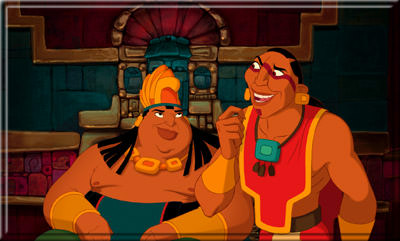 Another response to Were the Aztecs Murdering "Animals"? We begin with someone replying to the original poster:
Another response to Were the Aztecs Murdering "Animals"? We begin with someone replying to the original poster: Another response to Were the Aztecs Murdering "Animals"? We begin with someone replying to the original poster:
Another response to Were the Aztecs Murdering "Animals"? We begin with someone replying to the original poster:
I'm not sure if that's actually a stereotype—it happened. And I may be wrong (please correct me, if so), but I am not aware that the sacrifice victims were voluntary and had the "option to leave," as you put it. Stereotypes are different than facts that are ofensive, and it's a fact that Aztecs practiced widespread human sacrifice, costing untold thousands of lives. Comparing it to what churches did and pointing at them to say, "what about THEM?" may reflect a historic reality, but it doesn't minimize the cruelty of murder. It's wrong to murder one person, or to murder 40,000. I don't want anyone to minimize justice on the basis that it wasn't as bad as someone else's situation, or people might say "you Indians aren't so bad off, 'cause look at what they deal with in HAITI!" Well, being worse somewhere else doesn't excuse something that's wrong here. So unless the eyewitness art and written descriptions are wrong, I'm eager to learn about the notion that victims of human sacrifice, drawn from prisoners of war and poorer classes, were voluntary and had hte "option to leave."
Rob's reply
My response to the above:
>> I'm not sure if that's actually a stereotype—it happened. <<
Sure it's a stereotype. Most stereotypes are true to some degree. That is, they're grounded in truth. A fact becomes a stereotype when we use it to generalize beyond its actual scope.
For instance, we all know the Aztecs sacrificed people. Fact. Did they sacrifice 40,000 in one weekend? Unlikely. Was the sacrificial practice the sum total of Aztec culture? No, so sacrificing is an Aztec stereotype. Did most Mesoamerican cultures practice sacrifice? No, so sacrificing is a Mesoamerican stereotype.
>> And I may be wrong (please correct me, if so), but I am not aware that the sacrifice victims were voluntary and had the "option to leave," as you put it. <<
I don't think I said the sacrificial victims had an option to leave. What I said, or meant to say, was that people in general had the option to opt out of the system. As far as I know, the Aztec empire wasn't walled off with armed guards at the borders preventing people from leaving. If people objected philosophically to the Aztec system, they had some power to leave it.
>> Stereotypes are different than facts that are ofensive, and it's a fact that Aztecs practiced widespread human sacrifice, costing untold thousands of lives. <<
40,000 in one weekend? That sounds like more of a stereotype than a fact to me.
>> Comparing it to what churches did and pointing at them to say, "what about THEM?" may reflect a historic reality, but it doesn't minimize the cruelty of murder. <<
I wouldn't call the Aztec system of sacrificing people "murder" any more than I'd call our system of capital punishment or animal slaughterhouses "murder." But I wasn't trying to minimize the Aztec actions. I was trying to maximize the corresponding European actions. A movie such as The Road to El Dorado that presents only one side of the picture is distorting reality and reinforcing stereotypes.
>> So unless the eyewitness art and written descriptions are wrong, I'm eager to learn about the notion that victims of human sacrifice, drawn from prisoners of war and poorer classes, were voluntary and had hte "option to leave." <<
Let me reiterate that human sacrifice was a religious practice endorsed by the masses, not a state-imposed system of capital punishment and not an unsanctioned system of "murder." I don't know the percentages, but some of the victims considered the act of sacrifice an honor and went voluntarily, or at least without protest.
I haven't read of any eyewitness account that justified claims of 40,000 killed in "one weekend." As Erik Mattila showed in his response, the mathematics of the claim are fairly absurd. There's a huge difference between killing four, 40, or even 400 at a time and killing 40,000. The difference is part of the stereotype.
Rob
|
. . . |

|
All material © copyright its original owners, except where noted.
Original text and pictures © copyright 2007 by Robert Schmidt.
Copyrighted material is posted under the Fair Use provision of the Copyright Act,
which allows copying for nonprofit educational uses including criticism and commentary.
Comments sent to the publisher become the property of Blue Corn Comics
and may be used in other postings without permission.